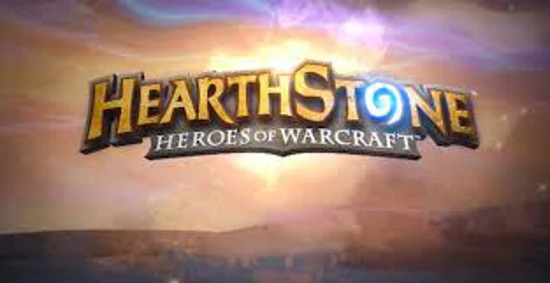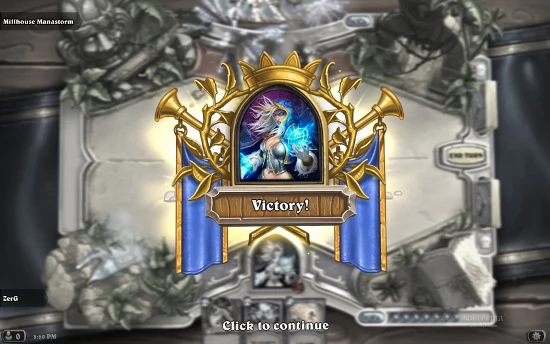Deck Building
Hearthstone: Heroes of Warcraft Guide
While you do not have the ability to control what cards you draw and in what order during a battle, you DO have the ability to control what cards are in your deck by building that deck, and so you can base the deck on a specific strategy and build it with cards that have synergistic relations with each other.
That said, the most important aspect to Deck Building is to know the cards and know how they relate to each other. For example if you are going to build a deck that contains Unbound Elemental minions in it, you want to also include Overload Minions - because they compliment each other.
The thing is you don't want to build decks that all depend on cards being drawn in a specific order or that only have one or even just two basic combinations, because it only takes one or two bad draws to put you on your knees. While you do want to have those special combinations available, you also want to have basic attack and defense strategies you can play as well.
Before we cover the basic logistics of deck building there is something else that we need to address - the reward cards you can earn and how that system works. That is important because it is not only a desirable event but it will permit you to refine your deck in the later stages.
Regardless of the class you are playing, every other time you level your hero up in the game you will receive as a reward a pair of cards. Specifically every two levels you will earn a reward pair of cards that may be valuable to your deck until you reach Level 10, at which point things change significantly.
At Level 10 the reward pairs change to what are called “Golden Cards” which are basically higher grade versions of the cards you already have in your deck. The way we choose to view that is as an opportunity to better the deck we are using and you should too.
Whenever you obtain new cards - either as rewards above or by purchasing Booster Packs - it is a very good idea to compare any cards that fit into your deck with the cards that are already in it with an eye towards using any better cards to improve your deck.
That said, we caution you not to try to tune your deck by changing its dynamics, but rather to improve what you already have - because you already know how to apply the strategy of the deck and any changes you make will naturally alter that strategy! The devil you know is always preferable to the one you do not.

Any new class-specific cards you can swap in that will better support your deck's hero are obvious choices.
While tuning the key cards in your deck is always an important consideration, your first interest should be to replace any generic minions in your deck with any new class-specific ones you have obtained. Remember that deck tuning is as much of an art as deck building.
Making changes to the base strategy of a deck rarely works out well - you are almost always better served in making a new deck with new strategic focus than you are trying to adapt an existing deck to a new focus.
The Two Rules of Basic Deck BuildingOkay there are actually more than two rules for deck building - but for basic deck building and for players who are just starting out and have yet to learn the finer points it is sufficient to say that there are just two rules that they need to follow: Mana Spread and Sybergy.
We hinted at the importance of synergy earlier - but specifically in terms of deck building what we mean is the way that each card works with the other cards in your deck. Ideally you want to create a deck in which each card has the ability to help the next - whether that help is in increasing its damage or buffing, or just filling the role of support minion to draw out the turns while you build your mana pool.
Other than your Hero and perhaps the three strategic attack sets the rest of the cards in the deck need to strike a balance between easy access to the field and filling supporting roles for your overall strategy. Gaining that measure of synergy being the point.
The second rule - Mana Spread - is really important in that it is followed to prevent falling into a situation in which you cannot field any cards because they all require more mana than you have in your pool!
Your basic goal should be for an even spread of cards across most of the mana costs so that you do not find yourself in that crippling position.
As long as you build into your deck a sufficient percentage of low-to-mid-mana-level cards, you will be able to field through the spread, which will prevent your opponent from quickly overwhelming you early in play.
Understand something - if you saddle your deck with too many high-mana cards you can easily find yourself being quickly knocked out in the first five turns!
That said - and while you really do want to have some high-cost heavy-hitting cards for late play - in order to protect yourself early on those heavy-hitters should be complimented by low-cost cards that offer effective early coverage.
Deck LimitationsBefore you get excited (like we did) and announce to the room full of people that you are going to get ten of each card and build the bestest deck ever (like we did) you should probably know that there are actually limits to the number of cards you can use to build said deck - limits that are not based on the insane arguments presented by Angus T. Jones, former front-man for the band Two-and-a-Half Men...
Specifically when you are planning and building your decks you should be aware that you may only use two (2) of each specific card - regardless of rarity - in a deck, and in the case of Legendary Cards you may only use one (1) in your deck.
So in theory other than using them to build additional decks, having a large number of dupes (that is leet game speak for "duplicates") are pretty much you know, worthless. That is especially true since there is no mechanism for trading, selling, or even giving away your extra cards yet (we say yet because it will not surprise us if, later down the road, that gets added to the game).

So yeah here is the thing - if you are having all these waking nightmares of having 20 extra cards of one type and another, worry not! For not only is there already a system in place to address this potential surplus, it is actually both cool and elite!
How it works is really rather clever - once you have built your decks and thus have determined which of the surplus cards you own are in fact surplus cards, you can then designate them as such, and "disenchant" them!
What does that mean?
Well when you disenchant a card what that does is destroy that unwanted card, turning its unwanted cardness into Arcane Dust - which is of course the second type of in-game currency in the game! How bloody cool is that?! Wicked cool!
The disenchantment scheme basically permits you to turn the cards you don't want or need into useful money-type digital thingies.
Closing NotesWe will close this by offering one more tip in terms of the critical importance of the Mana Spread - and that is despite the relative weakness of low-level minions, the perception of that relative weakness can in fact be a weapon in and of itself.
There is a tactic called the Death of a Thousand Cuts in which defeat and death are delivered through a massive number of small attacks rather than two or three heavy ones. If your opponent is conventional in their thinking you can use that against them!
It is possible to build a moderate range deck that is mostly low-cost cards complimented by a hero and just two higher strategy attacks that are grouped around medium rather than high mana cards. The constant pressure of lots of low-level cards will not deliver the message of fear to an opponent, allowing you to chip away at their health by constantly sacrificing those lower level minions until they suddenly find themselves in dire straights from a threat that they never saw coming.
That sort of deck design does not rely on or require advance understanding of the special attacks and combinations, but just a basic grasp so it is perfect for the new player.
The act of building such a deck will also serve to teach you the lessons of the strengths and weaknesses of those lower level minions.
That is an education that is well worth the defeats you obtain in the process of tuning the deck in order to armor it and better it. Just saying...